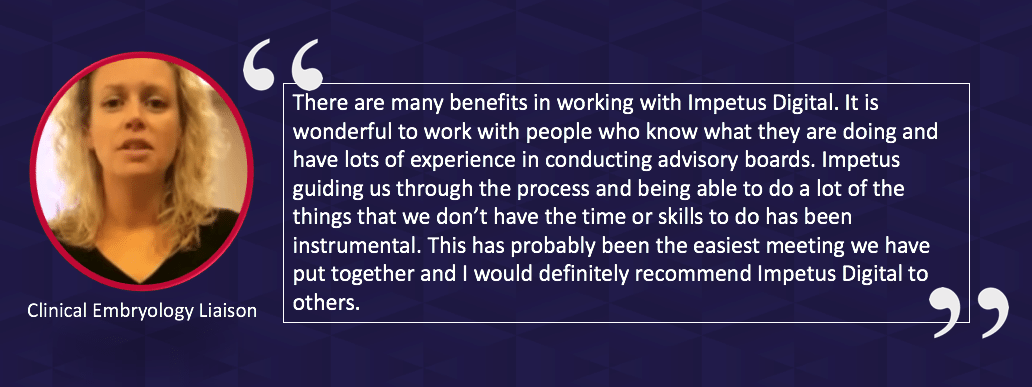When we first start working with a new client on developing their Longitudinal Expert Engagement Plan™ for their advisory board or working committee program, we like to take a step back and take a comprehensive view of their product. We take this approach because some managers can get trapped in “group think“. In other words, they are distracted by organizational lingo and the expectations of the senior leadership in charge of their product. In turn, this thinking can cloud creativity and sometimes stifle the strategic process of getting “back to basics“. Thus, managers interested in “instant gratification” frequently look for obvious junction points of engagement with the customer. Subsequently, they often miss the mark on the fundamentals of the real issues at hand. Indeed, these contact points are not implemented to gain new insights, but rather to gain “buy-in” on ideas already conjured up by the brand or cross-functional team.
When resetting the strategic plan, we like to go through our comprehensive MIQ Discovery™ process. The first step in this process is a “ranking and prioritizing” exercise. We begin by working through a very specific process of evaluating product and market considerations. We then help our clients to tease out the top 3-5 key issues that are preventing them from achieving “100% market share“.
In other words, instead of populating a series of touchpoints based on the latest conference data, we inspire our clients to think of other reasons for the challenges associated with their product.
Product-specific Considerations
- First, you must consider if there is anything intrinsic about your product that is impacting revenue growth, and if so, why? What attributes are the most concerning or exciting to prescribers, allied health care professionals, payers or patients? How is your value proposition, differentiation, messaging and branding affecting your growth? Is your mechanism of disease or product mechanism considered clinically relevant?
- Second, think about what specifics within your product label or indication (contraindications, warnings, optimal use cases, special restrictions, inclusion of non-medicinal ingredients, drug-drug interactions, or use in special patient subsets) can be positively leveraged? What is concerning and what options are there to rectify the issue?
- Examine what practical qualities of the product — from a storage, handling, stability, dosage form, packaging, and administration standpoint — are helpful or a hindrance to your brand growth? What questions still remain unanswered around these product specifications for you and your team?
- Scrutinize your drug’s route of administration or strength options and whether they are an advantage or disadvantage from a competitive or usability standpoint? What creative interventions can be made in the short term? Are there any long term fixes?
- Reflect on key efficacy and safety factors that are impacting your brand growth. In this regard, how are you faring compared to present or future competitors?
- Finally, is there anything that can be done about your product’s intrinsic challenges in the short, medium or long-term? Who needs to be involved? Where is this on the priority list or your circle of influence? How much will this cost?
Market-specific Considerations
After evaluating these specific product considerations, it is useful to also consider market-specific factors. On this note, think about how the following factors are positively or negatively impacting your brand. From there, you can determine the short-to-medium-term interventions that can influence the trajectory of your brand growth from both a revenue and market share standpoint:
- Clinical trial development plans (global, regional, investigator sponsored)
- Regulatory issues, labels, timing, rebuttals and other conditions that will affect launch timing, funding gates, and other strategic decisions.
- Pricing and market access, unmet medical need, value proposition, risk and cost sharing programs, co-pays, patient support programs, legislation issues, approval and payer bodies.
- Guidelines and protocols (global, national, regional, institutional).
- Customers and segmentation into geographical, language, specialty, issues, interest, and attitudinal/ behavioral categories.
- Data and key conferences, and the impact of competitor activity and data.
- Product lifecycle planning.
- Marketing strategies and tactics, channel strategies, digital integration and streamlining interfaces, and customer selection and engagement.
- Impact of patient empowerment and personalized medicine on customized patient journeys, integration of customer-centric approaches into the marketing mix.
- Big data thinking and analytics from social listening, wearables, apps integrating with hospital electronic medical records, patient portals, and thinking “beyond the pill”.
It is clear that there are many things to keep in mind when evaluating specific product and market considerations. However, when a wide scope, holistic approach is applied to both of these considerations, it allows us to assist our clients by isolating their top 3-5 brand issues. More specifically, these are issues that our clients know they will have control and a sufficient budget to impact product growth in the short to medium-term. In other words, we help get our clients to steer away from the “filtered” immediate “hot topics” or perceived issue at hand and channel them into larger objectives that can be clearly articulated, implemented, tested and measured.


Homework time!
Want to skip ahead? Curious how this actually works?
Sign up for a special complimentary, no obligation, personalized one-on-one web meeting demonstration to see how the MIQ Discover™ process works, and how our best-in-class online collaboration tools can be leveraged for your next advisory board or steering committee.



